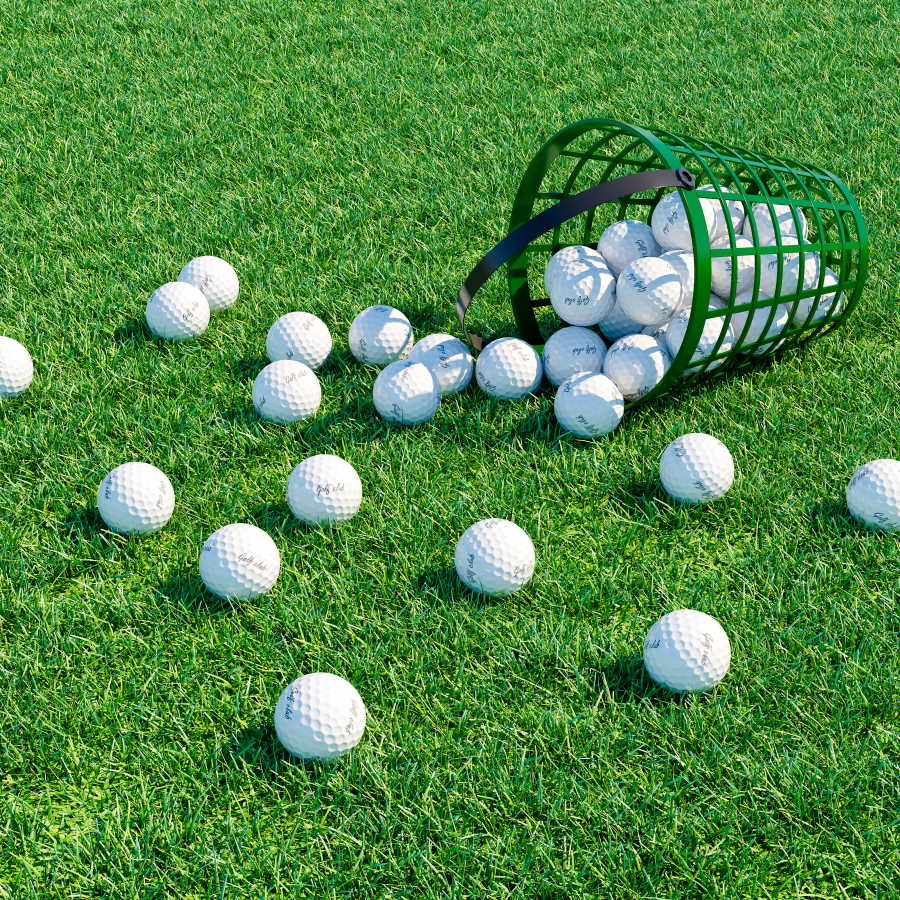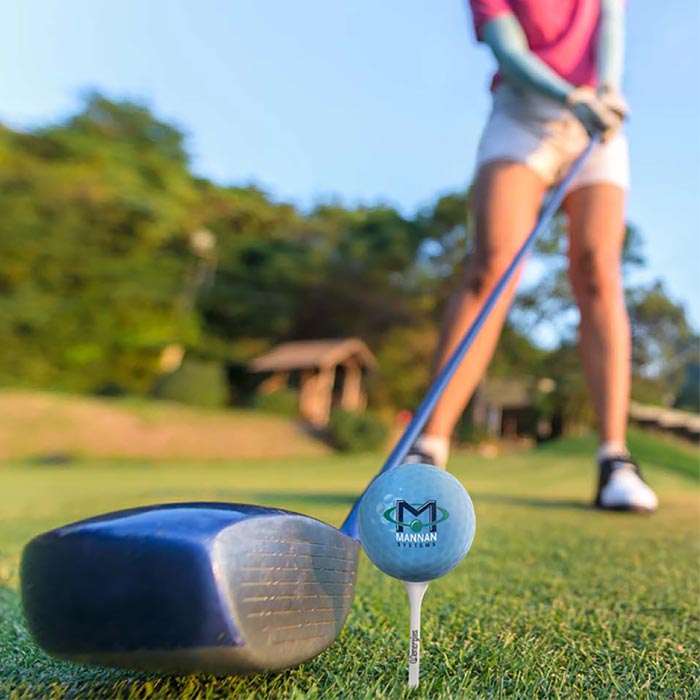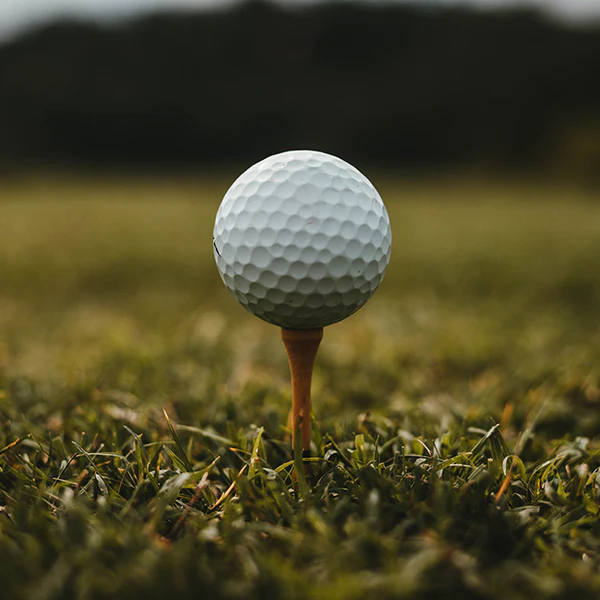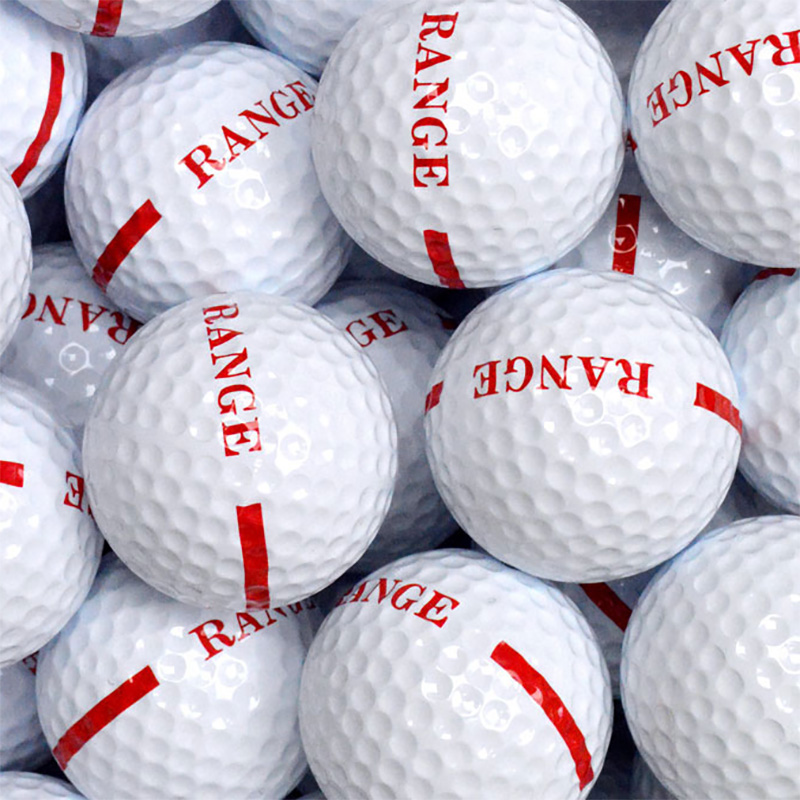I. Understanding Golf Ball Construction

A. The Anatomy of a Golf Ball
How to choose a golf ball? Golf balls may seem like simple spheres, but they are actually intricate and carefully designed pieces of equipment. The typical modern golf ball consists of several layers, each serving a specific purpose. The core, often made of synthetic rubber or resin, is encased by one or more mantle layers, which in turn are covered by the dimpled outer shell known as the cover. The cover can be made of various materials, such as Surlyn or urethane, and its thickness and composition affect the ball’s performance.
B. Compression and Spin Rates
Understanding the compression and spin rates of a golf ball is crucial for choosing the right one for your game. Compression refers to the amount the ball compresses when struck, impacting feel and distance. Low compression golf balls are softer and more suitable for slower swing speeds, while high compression balls are firmer and better for faster swings. Spin rates, on the other hand, affect control and distance. High spin balls provide greater control around the greens but may sacrifice distance, while low spin balls are better for maximizing distance but may be harder to control.
II. Factors to Consider When Choosing a Golf Ball
A. Skill Level and Swing Speed
How to choose a golf ball? Your skill level and swing speed are critical factors to consider when choosing a golf ball. If you have a slower swing speed, a low compression ball may help maximize distance, while higher compression balls may be more suitable for those with faster swings. Additionally, beginners and high handicappers may benefit from softer balls that offer forgiveness on mishits, while low handicappers may prefer a ball with more control and feedback.
B. Feel and Control
The feel and control of a golf ball are essential for shot-making and scoring. Golfers who prioritize feel and control around the greens may opt for multi-layer balls with urethane covers, as they provide better spin and control on approach shots and pitches. On the other hand, golfers seeking distance and forgiveness may opt for two-piece balls with Surlyn covers, which offer a firmer feel and enhanced durability.
C. Distance and Spin
Balancing distance and spin is crucial for finding the right golf ball. High handicap players may benefit from lower spin distance balls that help minimize slices and hooks, while low handicap and professional players may prioritize spin for greater control and shot-shaping abilities. Understanding how a golf ball’s design affects distance and spin can help golfers make an informed choice based on their gameplay requirements.
III. Types of Golf Balls

A. Two-Piece Golf Balls
How to choose a golf ball? Two-piece golf balls are the most common and popular type of golf ball. They are typically constructed with a large, solid core and a durable cover made of either Surlyn or urethane. Two-piece golf balls are known for their distance and durability, making them a great choice for beginners and high handicappers who are looking for a ball that can withstand mishits without sacrificing performance.
B. Multi-Layer Golf Balls
Multi-layer golf balls are designed with a soft core surrounded by one or more mantle layers and a thin cover. These golf balls are popular among mid to low-handicappers who prioritize control and spin on their shots. Multi-layer golf balls offer a good balance of distance, feel, and control, making them suitable for golfers with a more consistent and developed swing.
C. Urethane Cover vs. Surlyn Cover
Urethane covers are softer and provide more spin and control compared to Surlyn covers. They are commonly found in premium golf balls and are favored by low-handicappers and professional golfers due to their ability to shape shots and hold greens. On the other hand, Surlyn covers are firmer and offer more durability, making them suitable for beginner and high-handicap golfers who prioritize distance and forgiveness.
IV. Matching the Golf Ball to Your Playing Style
A. High Handicappers and Beginners
For high handicappers and beginners, the priority should be on choosing a golf ball that offers maximum distance and forgiveness. Two-piece golf balls with a Surlyn cover are an excellent choice for these players, as they provide durability and minimize the effects of mishits. The lower spin and firmer feel of Surlyn-covered golf balls can also help reduce slices and hooks, making them a more forgiving option for golfers who are still developing their swing.
B. Mid-Handicappers
Mid-handicap golfers can benefit from using multi-layer golf balls that offer a good balance of distance and control. These golf balls provide the feel and spin necessary for shaping shots and holding greens, allowing mid-handicappers to improve their scoring and approach the game with more precision. Look for golf balls with a soft core and a mantle layer to optimize performance and consistency on the course.
C. Low-Handicappers and Professionals
Low-handicap golfers and professionals should opt for premium golf balls with a urethane cover to maximize their performance. These golf balls offer the highest level of control, spin, and feel, allowing skilled players to shape their shots and execute precise approaches and putts. While premium golf balls may come at a higher price point, the benefits they provide in terms of shot-making and scoring make them a worthwhile investment for serious golfers.
A. Understanding Launch Monitor Data
How to choose a golf ball? Launch monitor data provides valuable insights into your golf game. It records important metrics such as clubhead speed, ball speed, launch angle, spin rate, and more. Understanding this data can help you make informed decisions about your equipment and swing technique.
When analyzing launch monitor data, it’s important to look for patterns and trends. For example, if you consistently see a high spin rate on your driver, you may need to adjust your launch angle or consider a different shaft to optimize your ball flight. Similarly, if your clubhead speed is below average, you can work on increasing your strength and flexibility to improve your performance.
In addition to analyzing your own data, comparing your numbers to professional golfers or players of similar skill levels can provide valuable benchmarks for improvement. Many launch monitor systems also offer simulation capabilities, allowing you to test different club and ball combinations to find the best fit for your game.
B. Conducting On-Course Testing
While launch monitor data provides valuable insights, on-course testing is equally important. The dynamics of the golf course, including varying terrain, wind conditions, and actual play scenarios, can have a significant impact on your performance.
When conducting on-course testing, it’s important to focus on specific aspects of your game. For example, if you’re testing a new driver, pay attention to how it performs on different tee shots, including long, straight drives and shots that require shaping around obstacles. Similarly, if you’re testing new wedges, focus on short game shots from different lies and distances to assess their versatility.
On-course testing also provides an opportunity to assess your mental game. Pay attention to how you manage pressure situations, such as hitting a crucial approach shot or sinking a putt to win a hole. This real-world feedback can help you identify areas for improvement and develop a more resilient mindset on the course.
C. Considering Environmental Conditions
Environmental conditions, such as temperature, humidity, and wind, can have a significant impact on your golf game. It’s important to consider these factors when testing and experimenting with different equipment and techniques.
For example, cold temperatures can cause golf balls to compress less, resulting in reduced distance. Similarly, high humidity can affect the flight of the ball, leading to less carry and more roll. Understanding how environmental conditions affect your game can help you make adjustments on the course and choose the right equipment for the job.
When conducting testing in different environmental conditions, it’s important to maintain consistency in your approach. For example, if you’re testing a new driver in windy conditions, try to hit multiple shots with the same club to assess its performance across different wind strengths and directions. Similarly, if you’re testing golf balls in varying temperatures, pay attention to how they feel and perform to determine the best option for different playing conditions.

